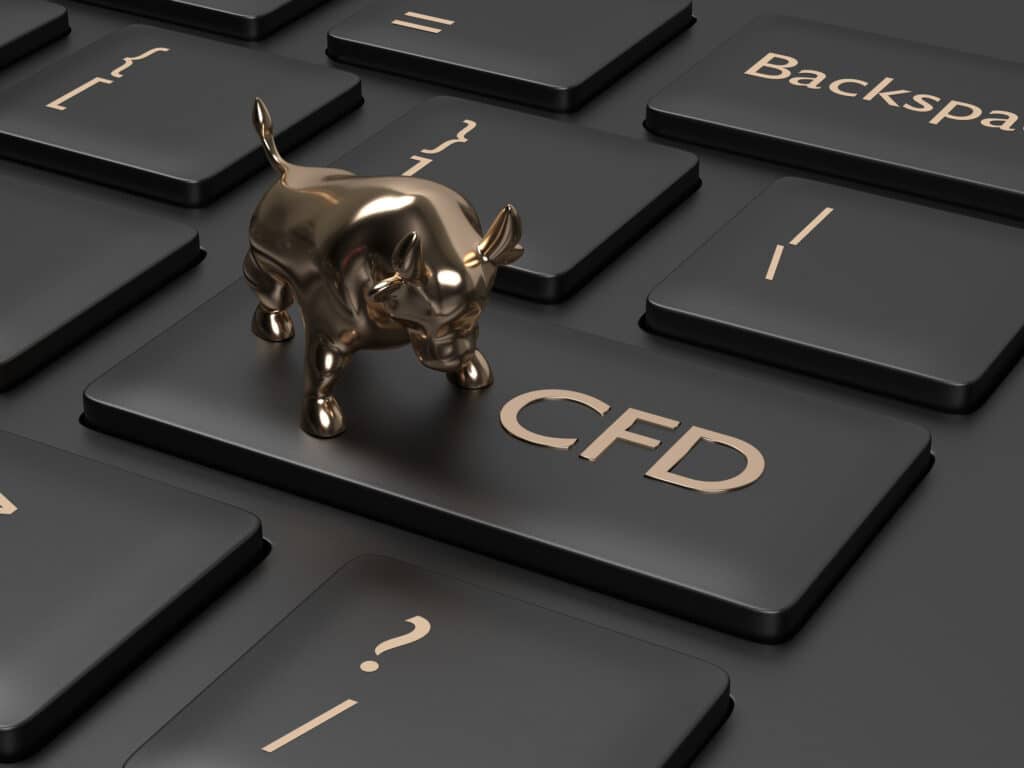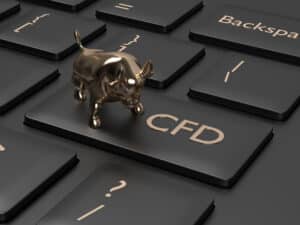An Essential Guide to Navigating Volatility in CFD Markets

Contracts for difference (CFDs) are derivative products that allow traders to speculate on the price movements of various underlying assets like stocks, indices, commodities, and forex. Their very nature makes them closely tied to market fluctuations. Volatility, a measure of how rapidly and intensely prices change, is an inescapable reality in CFD trading.
Understanding and skillfully navigating volatility is crucial for success in this arena as it presents the potential for significant profits and the danger of sizable losses. This comprehensive guide will equip you with strategies to manage risk and profit.
Table of Contents
What is volatility?
Simply put, volatility is how dramatically prices move up and down. Historical volatility calculates fluctuations using past price data. Implied volatility predicts future price changes using current market metrics like options pricing. Standard deviation and beta measure volatility statistically, quantifying how much prices deviate from the average.
Volatility is measured using the volatility index (VIX), calculated based on the options prices on the S&P 500 index. Investors also use it to gauge the market’s expectations. For example, in March 2024, the market mostly closed with a VIX of less than 15, indicating a more stable market, hence lower volatility. Readings above 20 mean more uncertainty, especially during the bear market. But one thing’s certain – volatility accelerates whenever big news drops or markets get emotional.
Traders have differing views on volatility. Some thrive on price extremes by using advanced trading strategies tailored to capitalize on volatility. Others avoid rocky markets altogether, preferring to trade only when conditions seem more relaxed. Knowing your personal risk tolerance and style of trading is key to determining whether volatile conditions suit you.

Strategies for navigating volatility
You can employ several strategies when trading CFDs to help you easily navigate the market, cut losses, or exploit profit opportunities. They include the following:
- Factor in fundamentals
In the frenzy of volatile price swings, it’s tempting to disregard fundamentals and focus solely on technical trading signals. However, savvy traders remember that fundamentals ultimately move markets, too. News affects asset prices throughout volatile periods, so stay updated on earnings reports, economic developments like unemployment and GDP growth, and industry trends.
Just know that the market tends to overreact to headlines when volatility spikes. Therefore, resist catching up in the short-term noise and interpret fundamental data calmly with the bigger picture in mind. Avoid making rash trading decisions right as news breaks – instead, watch for technical confirmations to identify the best market entries.
- Use stop-losses and study price action
To trade safely amidst volatility, the most important thing is to use stop-loss orders. These tools automatically close out losing trades at a predefined price level before losses spiral out of control. Stop-losses enforce vital damage control to your trading account.
Additionally, it pays to commit to locking in reasonable profit targets rather than clinging on to all your open positions in hopes of even greater gains. Letting winning bets ride could tempt fate during frenzied, volatile trading. Besides managing risk smartly, rigorously research price action around critical support and resistance levels.
Use technical analysis strategies to spot potential breakouts above resistance and breakdowns below support. Zoom in and spot potential reversal candlestick patterns signaling shifts in market momentum. Use trusted technical indicators like the Relative Strength Index (RSI) to identify overbought and oversold conditions prime for entries. Then, open new positions beyond those key levels and manage trades decisively using stop-losses while targets get hit.
Remember – for skilled traders, volatility brings opportunities to profit from changing market conditions using CFDs. Since they let you trade upward and downward price trends, take advantage of bullish and bearish market trends.
- Master your psychology
Fear and greed increase exponentially under volatile market conditions. That’s why it pays to adhere strictly to a detailed trading plan customized for times of higher volatility. Emotions can run high when markets start swinging wildly, so it’s crucial to stick to your plan and not make rash decisions.
Step away from the computer when you find emotions causing you to guess your trading strategies second. Taking a break prevents making mistakes in the heat of the moment that you’ll regret later. Additionally, expect some losses as part of trading – volatility means price action will hit stop-losses more frequently. Losses are inevitable, so stay rational and don’t take them personally.
It’s important to remain emotionally unattached from trades while staying laser-focused on executing your established strategies flawlessly instead of chasing hypothetical home run returns. Discipline is what separates successful traders from gamblers. Always assess performance on a long-term basis rather than worrying about each loss. Losing discipline by revenge trading or taking excessive risk means losing money in the long run.
- Using dollar cost average to reduce risk
Dollar-cost averaging (DCA) is an investment approach that can help manage risk in volatile markets. With DCA, you invest equal, fixed dollar amounts over regular intervals rather than attempting to perfectly time when to enter the market. By sticking to the plan, you automatically buy more shares when prices are low and fewer when they’re high.
This formulaic investing approach helps avoid emotionally pouring too much capital into overheated markets. Additionally, DCA offers solid returns over time while reducing the chances you invest a lump sum right before a market plunge. Research shows that historically, in the 33.33% of cases when lump sump investment fails, DCA offers more solid returns with less risk.
DCA works best when adhered to consistently over long periods rather than market timing. By incrementally investing at set intervals, it provides the discipline needed to navigate volatility.
- Choose a solid CFD broker
A quality CFD broker optimizes volatile trading activities through superior trade execution and technology. Seek one that offers competitive spreads, cutting-edge and stable trading platforms, transparent margin terms, and robust order execution. Remember that slippage can multiply during market turbulence – a reliable brokerage prevents filling at unfavorable prices. Check reviews and test broker demo accounts using virtual funds before trading real capital.
Advanced volatility trading tools also help investors identify opportunities faster through automated pattern recognition and notifications. Choose a broker providing access to the latest volatile price action scanners, volatility metrics, and customizable alerts when volatility surges.
In closing
CFD veterans understand volatility accompanies both promise and peril. Consistent risk management, intelligent analysis, and ironclad discipline can lead to success despite chaotic markets. Remember, proper preparation helps you thrive in volatility without succumbing to emotions.








